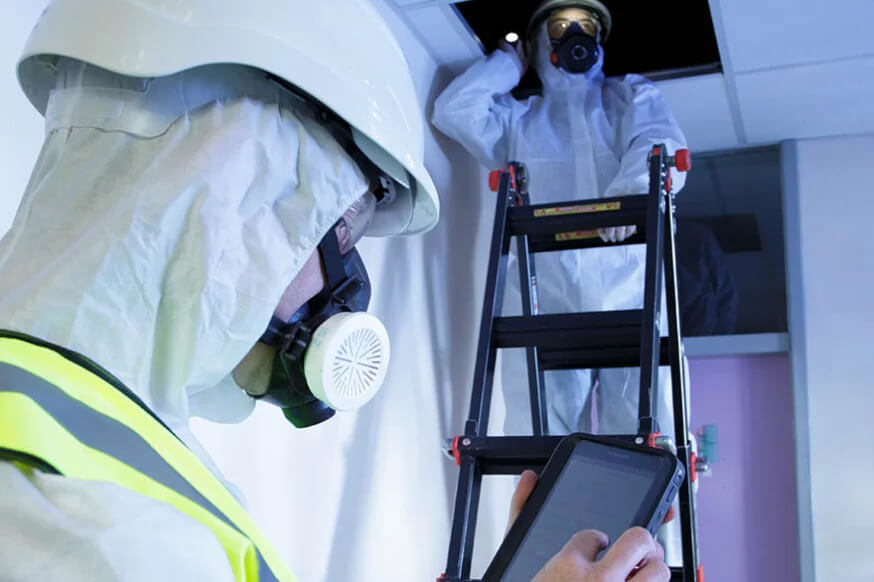Identifying asbestos in paint can be challenging because it’s not visible to the naked eye. Asbestos fibres are microscopic and can be mixed into various materials, including paint, as a strengthening or fireproofing agent. If you suspect that your paint may contain asbestos or you are planning renovation or construction work in an older building, here’s what to look for and the steps you can take to identify asbestos in paint:
1. Age of the Building:
- Asbestos-containing materials, including paint, were commonly used in construction until the 1980s. Buildings constructed before this period are more likely to have asbestos-containing paint.
2. Consult Documentation:
- Review any historical records, building plans, or renovation documents that may mention the use of asbestos-containing materials in the construction or painting of the building.
3. Professional Inspection:
- The most reliable method to identify asbestos in paint is through a professional inspection by a certified asbestos inspector. They can perform a visual inspection and collect samples for laboratory analysis.
4. Sampling:
- If you want to collect samples yourself, follow these guidelines:
- Wear protective gear: Use personal protective equipment (PPE), including gloves, goggles, and a respirator.
- Moisten the area: Spraying the surface with water can help prevent the release of asbestos fibres during sampling.
Collect a sample:
- Carefully scrape off a small piece of paint from the suspected area using a disposable knife or a similar tool. Place it in a sealed container.
- Label and send for analysis: Clearly label the container with the date, location, and description of where the sample was taken. Send it to an accredited laboratory for asbestos testing.
5. Laboratory Analysis:
- The collected sample will be analysed using polarised light microscopy (PLM) or transmission electron microscopy (TEM) to determine if asbestos fibres are present.
6. Interpretation of Results:
- If the laboratory confirms the presence of asbestos fibres in the paint, it’s crucial to follow safety protocols and consider appropriate actions, such as abatement or encapsulation, if the paint is deteriorating or poses a risk.
7. Professional Advice:
- Consult with asbestos abatement professionals who can assess the situation and provide guidance on the safest and most appropriate course of action.
8. Legal Requirements:
- Depending on your location, there may be legal requirements for handling and disposing of asbestos-containing materials. Be sure to comply with all local regulations and standards.
9. Safety First:
- Regardless of the results, always prioritise safety when dealing with potentially asbestos-containing materials. Minimise disturbance and avoid activities that could release asbestos fibres into the air.
Remember that asbestos is a hazardous material, and its presence should be taken seriously. When in doubt, seek professional assistance to identify and manage asbestos-containing paint safely and effectively.
Safeguard Your Space with Sydney’s Leading Asbestos Removal Experts
Don’t put your health at risk! Deft Demo, the trusted name in asbestos removal services in Sydney, is here to ensure a safer environment for you. Our expert team guarantees the secure and efficient removal of asbestos from your home or workplace. Contact us today for tailored and reliable asbestos solutions.


